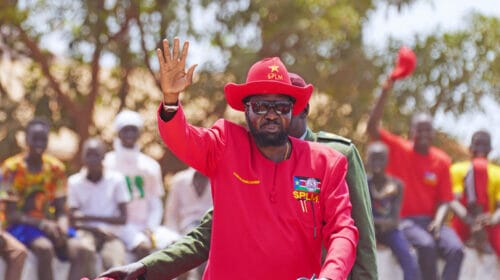Not one Drop
Many parts of northern Kenya have experienced two failed rainy seasons. In some places the people say it hasn’t rained for nearly three years. The need for water is obvious, and one that everyone can understand. But what’s surprising here is how the water crisis is having far reaching impacts on people’s lives.
The environmental effects of the lack of water are well known. Pictures of cracked earth and livestock carcasses have become synonymous with this drought. And it has been well reported that this has meant the failure of crops for farmers and death of livestock for pastoralists – a loss of livelihoods and income for most families.
Less known though is the social impact the acute water shortage is having on families.
Women, whose traditional domestic roles make them the main water collectors, are faced with the increasingly difficult task of finding new water sources. For some this means spending long hours scooping water from shallow wells. For others it means trekking long distances in remote areas where they are more at risk of violence and sexual harassment.
For children, water shortages can mean being pulled out of school. The reasons for this vary; parents may need their help to collect water; or in some instances the whole family migrates closer to a water source. But often it’s because parents who’ve lost their sources of income can no longer afford the costs associated with schooling – expenditure on water takes priority.
In some areas, water shortages have even led to conflict. Areas in the Rift Valley and Coastal region that have received even the smallest amount of rainfall are seeing a huge influx of people. In a desperate search for water, clashes are taking place over areas of pasture that have received rains, or natural water sources that have survived the drought.
Modogashe is just one of the areas crippled by water shortages. Here, the river bed has completely dried up and even an ActionAid-built water tank – which usually pipes water from an underground river – has lost its source of water.
ActionAid is now working with the Government to supply fresh water to communities in and around Modogashe. This tank is filled four times per day – twice by ActionAid and twice by the Government. Together, we’re providing 800 households – some 5,000 people – with the water they need.
Ibrahim Kossi, ActionAid Coordinator in the area, explains that “if ActionAid didn’t do this there would be a crisis. The Government is carrying out water trucking but it is not enough. ActionAid is supplementing this with a further two deliveries a day.”
Water trucking may not be a sustainable and long lasting solution, but in areas which haven’t seen rain for years, it is what is needed to keep people alive, and get them through the next few weeks and months.
In addition to water trucking, ActionAid is providing fuel for boreholes where communities can afford to sustain them. It’s a cost effective way of making sure communities can make best use of the water sources available to them. In the longer term we will be drilling boreholes that tap into underground water sources. This will help to lessen people’s dependence on the rains, which have proved so unreliable.
Source: www.actionaid.org



